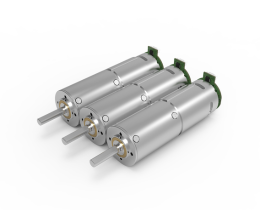Hobby Gearmotors: The Quiet Force Behind Your Passion Projects
Picture this: a weekend tinkerer in a cluttered garage, soldering iron in hand, staring at a half-built robot. The problem? A jerky, unreliable motor that can’t handle the weight of its own design. Sound familiar? That’s where hobby gearmotors step in—not as flashy as 3D printers or laser cutters, but the unsung heroes that turn ideas into motion.
.webp)
Let’s cut to the chase. What makes a gearmotor worth your time? It’s not just about spinning fast or being loud. It’s about precision, durability, and fitting into projects like a missing puzzle piece. Take solar-powered garden bots, custom RC cars, or even miniature conveyor belts for DIY factories—gearmotors are the muscle behind the magic.
“But why gearmotors?” you might ask. Simple. They’re built to handle heavy lifting without burning out. Unlike standard motors, gearmotors combine a motor with a gearbox, trading raw speed for controlled torque. Think of it as swapping a sprinting cheetah for a steady, powerful ox. Need to lift a 5-pound camera rig slowly and smoothly? A gearmotor won’t flinch.
Here’s the kicker: not all gearmotors are created equal. Ever bought one that started whining after a week? Or worse, overheated and stalled mid-project? Frustrating, right? At KPOWER, we’ve heard stories like this for years. That’s why our designs focus on heat resistance and noise reduction. One user described ours as “the librarian of motors—strong, silent, and always reliable.”
Q: How do I pick the right one?
A: Start with your project’s “non-negotiables.” Weight capacity? RPM range? Space constraints? A 10:1 gear ratio might work for a mini conveyor, but a 50:1 ratio could better suit a heavy-duty robotic arm. Pro tip: Overestimate your torque needs. Better to have unused power than a motor that quits halfway.
Hobbyists often overlook maintenance, too. Dust, moisture, or occasional overloads can kill cheaper models. KPOWER units? They’re built like tanks. Sealed bearings, corrosion-resistant casings, and thermal protection keep them running longer—even when your project lives in a damp basement or a dusty workshop.
Still skeptical? Consider this: a gearmotor isn’t just a part. It’s an investment in your time. Why waste hours troubleshooting a faulty component when you could be iterating, improving, or just enjoying the build?
So next time you’re knee-deep in wires and prototypes, ask yourself: does your motor match your ambition? If not, maybe it’s time to upgrade. After all, the best projects aren’t just built—they’re powered by choices that don’t hold you back.
KPOWER doesn’t sell motors. We sell confidence in motion. And sometimes, that’s the difference between a project that gathers dust and one that changes the game.


































.webp)

